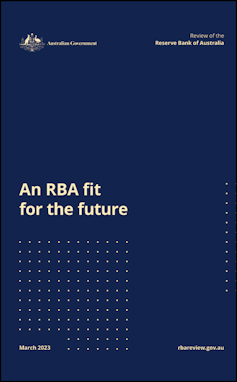how Jim Chalmers will recraft the RBA for the 21st century
- Written by Isaac Gross, Lecturer in Economics, Monash University

The review into the Reserve Bank of Australia has just been published by Treasurer Jim Chalmers, and it’s a blockbuster[1].
The review has made 51 recommendations including:
taking away power over interest rates from the Reserve Bank board (which has traditionally been dominated by non-economists, usually corporate executives) and devolving it to a panel of experts
-
reducing the number of decision-making meetings from 11 to eight per year
boosting the transparency of its decision-making process and holding it more accountable for those decisions.
Chalmers offered in-principle agreement to all 51 of the panel’s recommendations and said he would be seeking support from the Opposition for any legislation needed to implement them. The review has briefed Opposition Treasury spokesman Angus Taylor on its thinking.
Chalmers set up the three-person review[2] in July 2022, appointing Carolyn Wilkins, a former senior deputy governor of the Bank of Canada, Renée Fry-McKibbin, of the Crawford School of Public Policy at the Australian National University, and Gordon de Brouwer, a specialist in public sector reform.
What was the problem?
While the apparent nature of the problem has changed over time, its root cause remains the same.
When the concept of the review was first mooted in 2020, the economy was in a bad state with inflation well below the bank’s target band of 2-3% and economic growth anaemic.
As a result, wage growth was too low and unemployment too high.
The most likely explanation is that the bank was focused too much on stabilising the financial system and too little on boosting the economy.
The bank was setting interest rates using its gut instead of its brain, in an almost literal sense – it was not doing what its computer model suggested it should do[3].

















